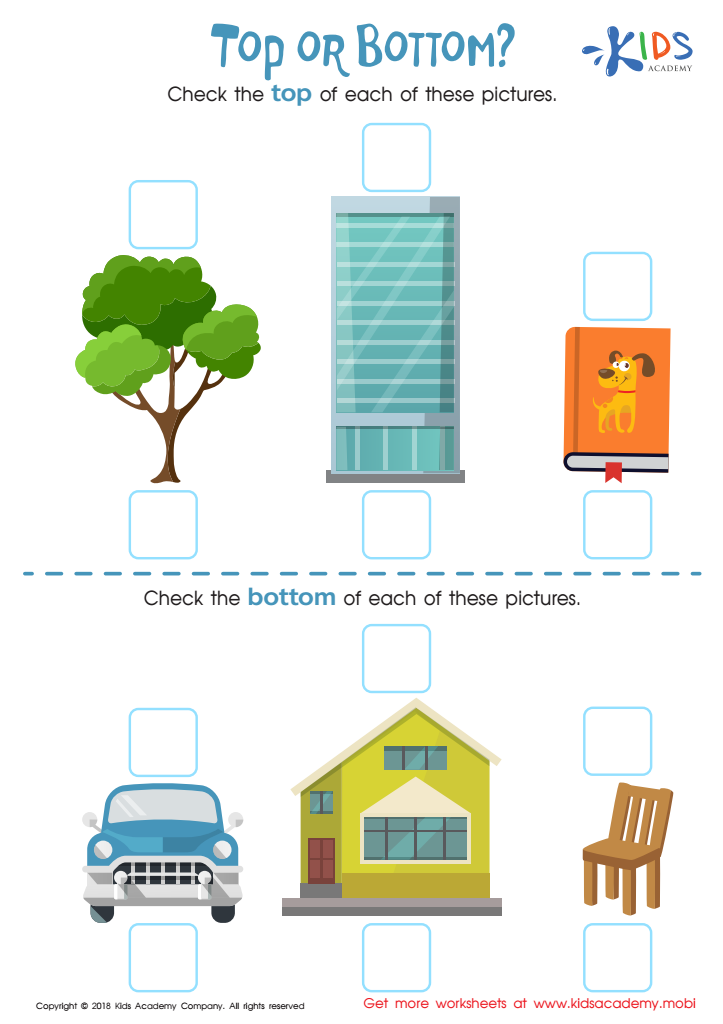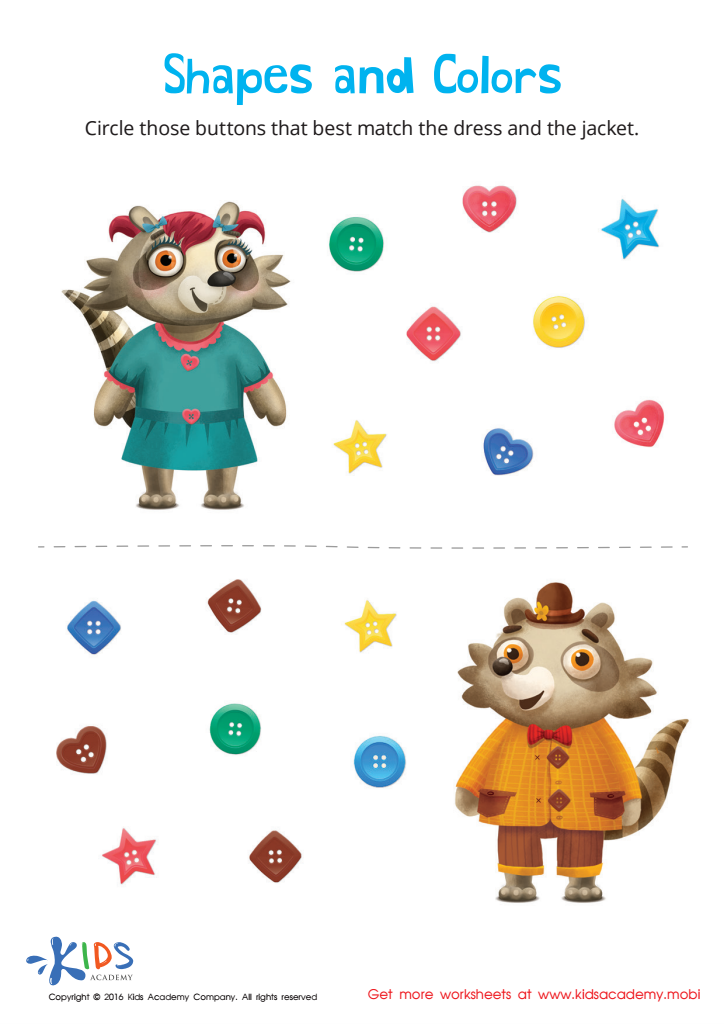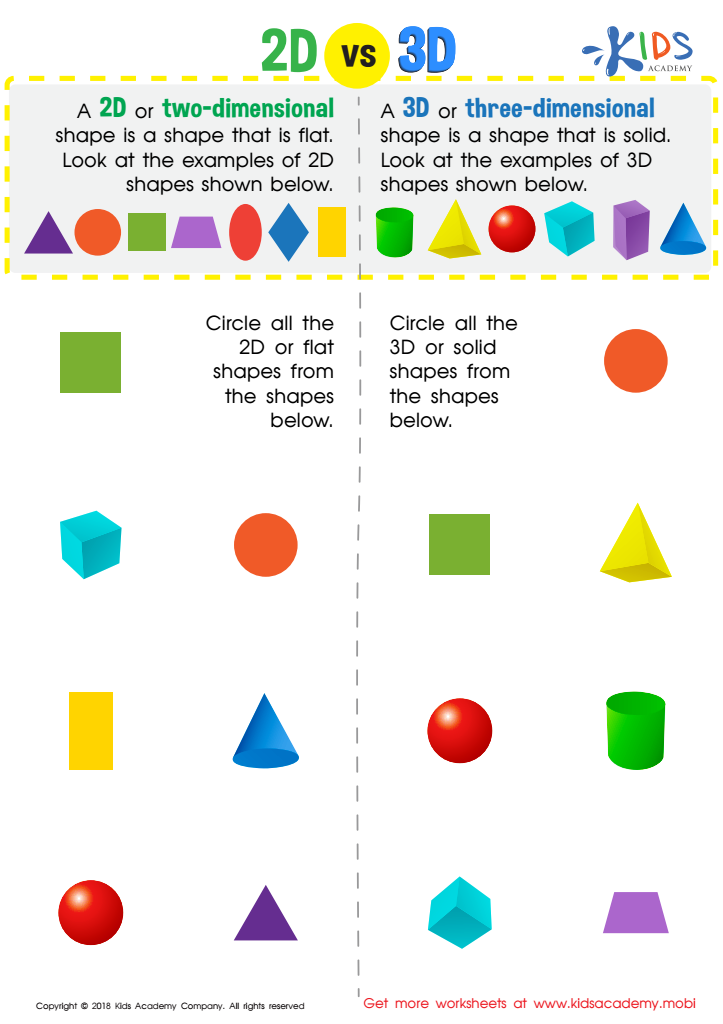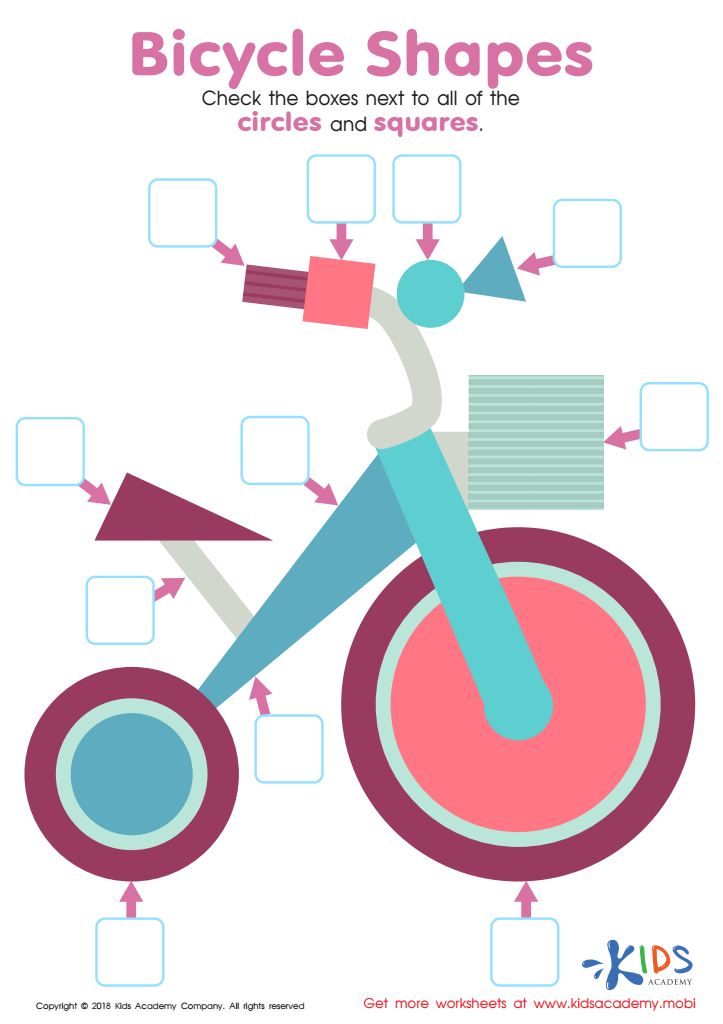Visual perception Geometry Worksheets for 4-Year-Olds
5 filtered results
-
From - To
Discover our engaging Visual Perception Geometry Worksheets for 4-Year-Olds designed to enhance spatial awareness and shape recognition skills. These worksheets incorporate fun activities that promote learning through play, allowing young learners to explore various geometric shapes and their attributes. With vibrant illustrations and interactive elements, children will enjoy identifying, sorting, and matching shapes, improving their visual discrimination and fine motor skills. Perfect for home or classroom use, these resources support early childhood development and foster a love for math. Start your child’s geometric journey today and watch their confidence and curiosity soar as they learn in an enjoyable, visually stimulating environment!


Top or Bottom Worksheet


Matching: Shapes and Colors Worksheet


Preschool Geometry Match Up Worksheet


2D vs 3D Shapes Worksheet


Bicycle Shapes Worksheet
Visual perception, particularly in the context of geometry, plays a vital role in a child's cognitive development, especially for 4-year-olds. At this stage, children are naturally curious and eager to explore their environment. Ensuring that parents and teachers prioritize visual perception skills can significantly impact their overall learning journey.
Firstly, strong visual perception skills form the foundation for later mathematics and spatial reasoning abilities. Recognizing shapes, understanding spatial relationships, and interpreting patterns are essential skills that emerge through activities involving geometry. Encouraging exploration of these concepts at an early age prepares children for more complex mathematical tasks in the future.
Additionally, developing visual perception promotes problem-solving abilities and critical thinking. Engaging with geometric concepts through play—like puzzles, building blocks, and simple drawing exercises—allows children to experiment and develop their creativity while also honing their observational skills.
Moreover, incorporating visual perception activities enhances fine motor skills essential for tasks such as writing and crafting. Overall, prioritizing visual perception geometry in early education fosters a love for learning and builds foundational skills that benefit children across various subjects, ultimately supporting their academic success and lifelong learning endeavors.
 Assign to My Students
Assign to My Students































